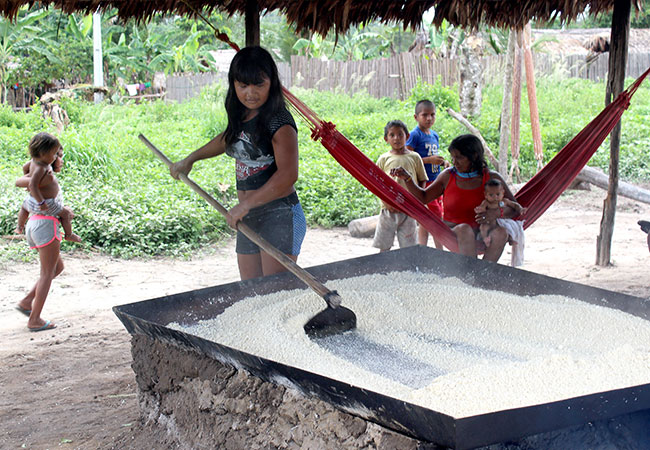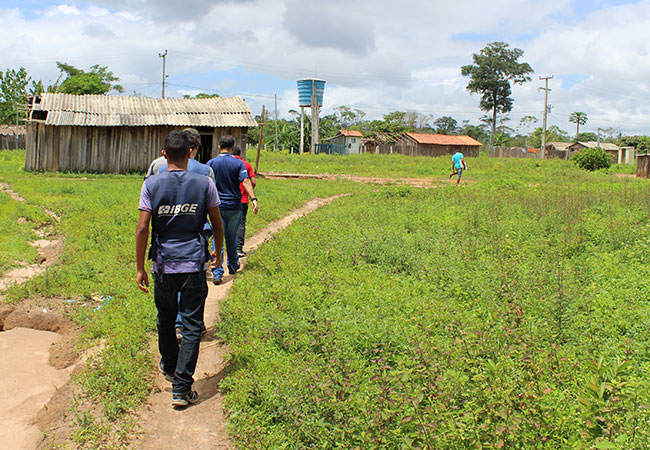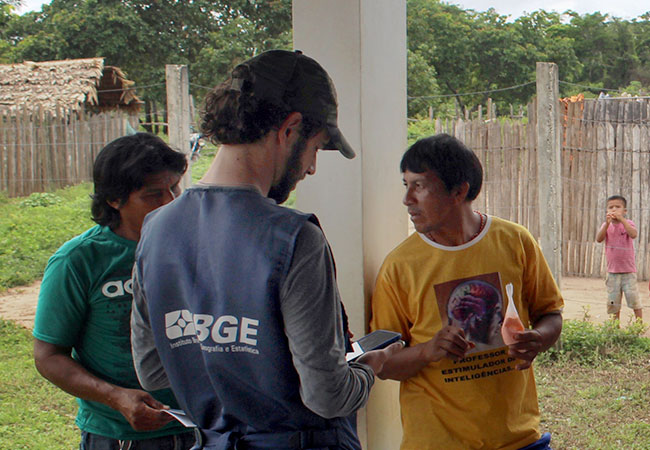Indian Day
In Maranhão, production statistics give visibility to Indians
April 19, 2018 09h00 AM | Last Updated: June 05, 2018 10h30 AM
More than collecting data, the 2017 Census of Agriculture, carried out by the IBGE, also brings out the agricultural production of traditional communities, such as the Indians. In Maranhão, during the data collection for the Census of Agriculture, the enumerators crossed several Indian lands and saw the peculiar way in which this population deals with the land. Despite the difficulties faced, such as deforestation and other forms of destruction, these communities struggle daily to keep alive the traditions inherited from their ancestors.
More than fighting for traditions, these peoples fight for social rights. This is the focus of the Indian Day, celebrated on April 19 in Brazil and in other Latin American countries, such as Argentina and Costa Rica. Adopted officially in Brazil in 1943, the date is a reference to the first meeting between authorities and Indian representatives in the Inter-American Congress on Indian Life in 1940.






Difficulties in data collection
One of the villages visited by the census takers in Maranhão was Axinguirendá, located in the municipality of Centro do Guilherme, about 440 km from São Luís. It is located in the Indian land of Alto Turiaçu, where the Ka'apor Indians live.
It is not easy to get to the place where the community is located. It takes about 20 kilometers to get from Centro do Guilherme downtown to the village, through a secondary, thin, unpaved road that sometimes crosses the woods.
The difficulty reaching to the place indirectly helps preserve the culture of its people by discouraging visitors. Nonetheless, the location was not a big enough obstacle to prevent the arrival of loggers, who caused deforestation in the region.
The Indians of the Axinguirendá Village survive from subsistence agriculture, fishing and also hunting - the latter is done within the thicket. Animal farming is very restricted.
As part of their daily routines, members of the community need to travel frequently to Centro do Guilherme downtown in search of some food. All pieces of information were passed on to IBGE enumerators by the village male leaders, since only men speak Portuguese. Women and children under five years old speak only Tupi-Guarani.
The community still preserves much of its ancestors' traditions, which can still be seen in the division of labor, for example: while men are responsible for hunting and fishing, women are engaged in household chores and agriculture. During the data collection, for instance, a group of women was producing flour, starting with the cutting of the cassava until the final product.
Other customs that are part of the community culture are still kept and continue to be handed down from generation to generation. "We also have parties, weddings and baptisms," said Ximy Ka'apor, the village cacique. However, local Indians have already faced threats to their traditions.
Loggers: a threat
According to the National Indian Foundation (Funai), Maranhão today has 22 Indian lands spread along its territory, where populations of several ethnicities live, as Ka'apor, Guajá, Tenetehara, Kanela, Kricati, among others. Many of these lands were once and still are devastated by the action of outsiders, causing, many times, irreversible damage to these traditional communities.
In the Axinguirendá Village, the presence of loggers and the illegal extraction of wood caused tremendous damage to the community. As a result, conflicts between the Indians and invaders were frequent.
"Today, there are no longer as many loggers as before," said Ximy Ka'apor. That is due to the surveillance in the region to prevent the activities of clandestine loggers and illegal deforestation. Nevertheless, the consequences of the devastation are still present in the Indian lands and only time can make the forest recover.
The pollution of many of the weirs of the village land is another consequence of the action of non-Indians: illegal prospectors acting in the locality. Despite the difficulties, the community is managing to overcome obstacles to keep its traditions and culture alive.



















